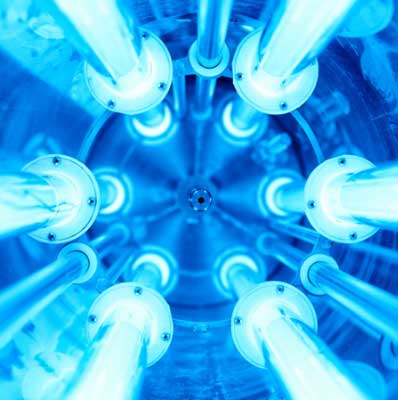AOP reactors – Design and manufacturing
Reactors based on Advanced Oxidation Processes (AOPs), utilize artificial or natural light in the presence of a suitable catalyst, in order to eliminate chemical or microbial pollution.
The design of AOP reactors in mainly based on:
a) The type of operation (batch or continuous flow):
Batch reactors are commonly used, mainly due to their simplicity of design, robustness and increased performance. They find applications to the treatment or pretreatment of wastewater effluents with high organic load, using a well-mixed slurry of photocatalyst or immobilized photocatalytic material on a supporting surface in an intermittent type of operation.
Continuous-flow reactors on the other hand, carry both the treatment solution and the catalyst in a continuous stream. Variations in the contact time significantly affects the pollution load of the treated solution, increasing operating flexibility and finds application to a spectrum of wastewater types with various pollution loads.
b) The state of photocatalyst (suspended particles or immobilized on supporting surface):
Slurry-type reactors utilize suspended photocatalytic particles, offering a high photocatalytic surface per unit volume, thus increasing the efficiency of photocatalytic degradation. Nevertheless, they require elaborate separation and filtration steps, in order to retrieve and regenerate the catalyst.
Reactors with immobilized photocatalytic material, offer lower degradation performance, due to mass-transfer limitations and reduced active photocatalytic surface. Nevertheless, they do not require extra separation/filtration and are quite simple to install and use.
c) Versatility to utilize artificial or solar light:
AOP reactors commonly use artificial UV irradiation sources with high emission intensity, in order to activate photocatalytic materials and produce highly active oxidative radical species.
The development of photocatalytic material activated using visible light, offers the opportunity to operate AOP reactors taking advantage of direct solar irradiation.
GtG offers a variety of custom-designed AOP reactors, scaleable, in order to eliminate the organic load, based on the treatment requirements, the volume and the flow-rate of different types of water and wastewater, and the requirements of legislation.



